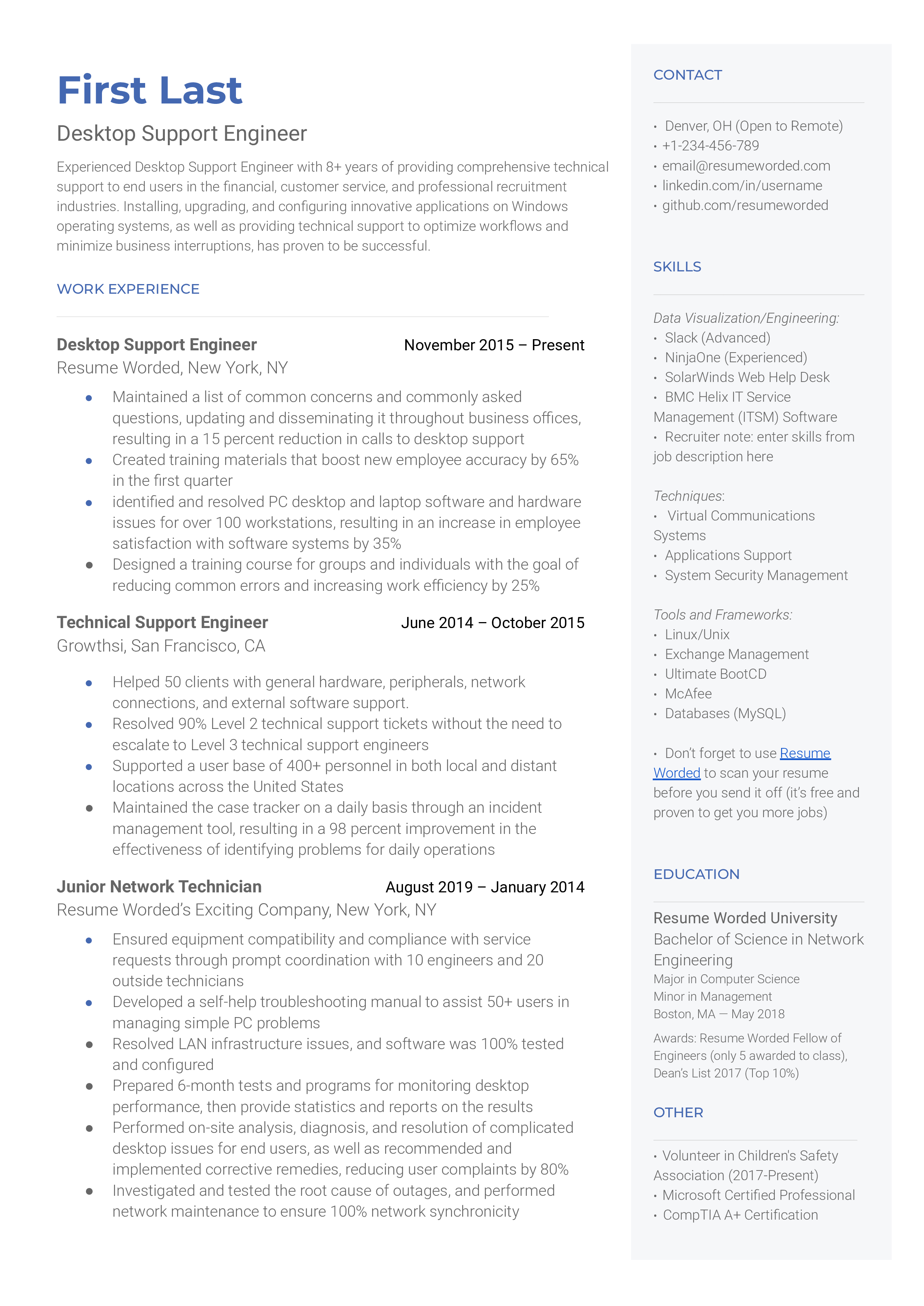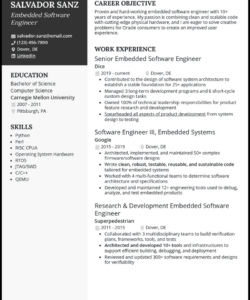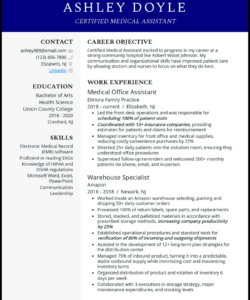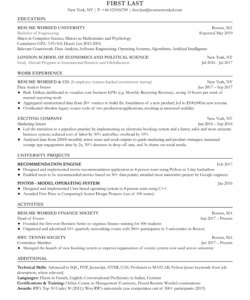Landing your dream job as a desktop support engineer starts long before the interview; it begins with a powerful resume. In today’s competitive job market, your resume isn’t just a document detailing your past roles; it’s your personal marketing tool, designed to grab the attention of hiring managers and recruiters within mere seconds. It needs to clearly articulate your technical prowess, problem-solving abilities, and customer service skills, all while making a memorable impression.
Creating a resume from scratch can feel like a daunting task, especially when you’re trying to showcase a diverse set of IT skills and experiences. That’s where a well-structured desktop support engineer resume template becomes invaluable. It provides a solid framework, ensuring you include all the essential sections and present your information in a clean, professional, and easy-to-read format. This guide will walk you through crafting a resume that stands out, helping you transform your career aspirations into reality.
Building a Strong Foundation for Your Desktop Support Resume
When you’re aiming for a desktop support engineer role, your resume needs to do more than just list your previous jobs; it needs to tell a compelling story of your capabilities. Begin with your contact information, ensuring it’s clear and current. Following this, a strong professional summary or objective statement is crucial. This is your elevator pitch, a concise paragraph or two that highlights your key skills, experience, and career goals, tailored specifically to the desktop support field. Think about what makes you unique and immediately valuable to a potential employer. Are you a troubleshooting wizard, a customer service champion, or an expert in specific operating systems?

Next comes the skills section, arguably one of the most important for a technical role. This isn’t just a laundry list; it should be a strategic collection of both your hard and soft skills. Hard skills might include operating systems like Windows, macOS, and Linux, network protocols, hardware troubleshooting, software installation, remote desktop tools, and perhaps even some scripting languages. Soft skills are equally vital for a desktop support engineer, as you’ll be interacting directly with users. Think about your communication skills, problem-solving approach, patience, and ability to work under pressure. Many recruiters scan resumes for keywords, so make sure your skills align with the job description.
Showcasing Your Experience and Education Effectively
Your work experience section should be more than just dates and job titles. For each role, use action verbs to describe your responsibilities and, more importantly, your achievements. Instead of saying “Responded to tickets,” try “Resolved over 50 technical support tickets daily, improving user satisfaction by 15%.” Quantifying your accomplishments with numbers or specific outcomes makes your impact tangible and impressive. Highlight instances where you improved system efficiency, reduced downtime, or enhanced user experience. Even if you don’t have direct “desktop support engineer” titles, think about how your previous roles involved troubleshooting, user assistance, or system maintenance.
Finally, your education section should clearly list your degrees, certifications, and relevant coursework. For a desktop support role, certifications like CompTIA A+, Network+, or Microsoft Certified: Modern Desktop Administrator Associate can significantly boost your credibility. If you’re a recent graduate, you might include relevant coursework or projects that demonstrate your technical aptitude. Remember, consistency in formatting and a clean, professional appearance throughout this entire section are paramount to making a great first impression. A well-chosen desktop support engineer resume template can help you maintain this consistency effortlessly.
Refining Your Resume for Maximum Impact
Once you’ve got the core content down, the real magic happens in the refinement stage. Think about the specific job description you are applying for. Is it for a large corporate environment or a smaller startup? Each might prioritize different aspects of a desktop support engineer’s skill set. Tailoring your resume means subtly adjusting your professional summary, emphasizing certain skills, and rephrasing bullet points in your experience section to directly address the employer’s needs. For instance, if the job mentions a lot of remote support, highlight your experience with remote diagnostic tools and strong communication skills for non-technical users.
Another crucial step is ensuring your resume is optimized for Applicant Tracking Systems (ATS). Many companies use these systems to filter resumes before a human even sees them. This means using keywords from the job description naturally throughout your resume. Don’t just stuff keywords; integrate them into your descriptions of duties and achievements. A good desktop support engineer resume template is often designed with ATS compatibility in mind, using standard headings and clear formatting that these systems can easily parse. Avoid overly complex graphics or unusual fonts that might confuse the ATS.
Proofreading is not just a suggestion; it’s a requirement. A single typo or grammatical error can undermine your professionalism and attention to detail, qualities that are highly valued in a desktop support role. Read your resume multiple times, and then have someone else review it for fresh eyes. Sometimes, a friend or mentor can spot mistakes you’ve overlooked. Checking for consistency in verb tense, formatting, and spacing is also vital. This meticulous attention to detail reflects well on your work ethic and thoroughness, suggesting you’ll apply the same care to technical issues.
Lastly, consider including a link to an online portfolio, GitHub profile, or professional networking site like LinkedIn, especially if you have project work or contributions you can showcase. This provides an employer with a more comprehensive view of your capabilities and passion for technology. A well-crafted resume, thoroughly refined and targeted, acts as a powerful ambassador for your professional brand, setting you on the right path to securing that interview and ultimately, your next career opportunity.


